
by Jennifer Hart Yim | Jun 27, 2018 | Blog, Content Marketing, Logistics, Marketing, Supply Chain, Talent
Millennials are breaking stereotypes across the industry. This new generation is bringing youth, better education, and lots of diversity to supply chain management.
This guest post comes to us from Argentus Supply Chain Recruiting, a boutique recruitment firm specializing in Supply Chain Management and Procurement.
Everyone knows that the demographics of the Supply Chain industry are changing. They have to. Within a few years, demographers estimate that 400,000 baby boomers will be retiring in Canada every year. Within the Supply Chain industry, the looming – and in fact, already-started – retirement of baby boomers and shifting job responsibilities brought about by technology are creating a talent crisis.
It’s something that we’ve covered extensively at Argentus. We’ve written about how the industry can fill the burgeoning gap in talent: by increasing educational opportunity, doing more outreach to young people, and improving communication about the vast career potential in the field – a field that until recently was stereotyped as transactional, hidebound and, in a word, boring.
Today’s Supply Chain professionals know that – especially at the highest levels – the field is anything but. And it looks like some of these efforts to avert the talent crisis have begun to bear fruit: a major new survey shows that millennials are moving into the workforce in a big way, changing its Supply Chain’s demographics and disrupting the industry.
The survey, conducted by Peerless Research Group, Supply Chain Management Review, APICS and APQC surveyed 676 millennials (between the ages of 22 and 37) in April 2017 to find out about their demographics, expectations, goals and current career status within the Supply Chain industry. It’s a far-reaching report with a lot of results busting down stereotypes both about Supply Chain and millennials themselves.
As a recruitment company specializing in Supply Chain and Procurement, Argentus sits at the nexus of a lot of these demographic changes. Needless to say, we read the report with great interest. Here were some of our biggest, and most surprising, takeaways.
Takeaways from Apix survey on millennials in supply chain.
Careers are becoming more intentional:
- When we speak with SCM professionals from the baby boomer and Gen X generations, it’s really common for us to hear, “I didn’t plan on going into Supply Chain, but I fell into it.” But this tendency is changing. The report found that 75% of millennials in Supply Chain jobs intentionally began their careers within the field.
- Planning and Procurement are taking on a bigger role in the field: 22% of millennials surveyed are working in Planning and 21% in Procurement, compared to 15% in Logistics, 11% in Inventory Management, and 9% in Manufacturing.
Supposed “Job Hoppers” are actually staying put:
- We’re maybe a ways past the 2008-2014 heyday of stereotyping millennials in the workforce. Companies are realizing millennials’ huge value as employees. With that in mind, the report still dispels some classic stereotypes about millennials in the workforce. There’s a perception that millennials are “job hoppers” who don’t have loyalty to their employers, but the survey found that 38% of millennial respondents have worked for just one employer their entire career. 65% had worked for their current employer for more than 5 years.
Educational opportunities are taking off:
- One of the biggest growth areas in the field is the increasing prevalence of educational opportunities as more universities and colleges bring SCM programs online. 66% of the millennials surveyed have either undergraduate or graduate degrees in Supply Chain or Logistics. APICS conducted a similar survey in 2016 – this time of senior leaders in the field – and found that only 19% of the leaders surveyed had degrees in the field, which suggests that millennials are taking advantage of these increased educational opportunities.
- 59% of the millennial supply chain employees surveyed have a bachelor’s degree of some kind, even if it’s not in Supply Chain or Logistics. The 2016 leadership survey found that only 45% of Supply Chain leaders had degrees. It’s worth mentioning that more companies are requiring degrees these days for sole contributor roles, so this might be a response to that market pressure.
- Millennials are interested in continuing education in the field, suggesting it’s not just a fly-by-night career for them. 65% of the survey respondents indicated that they were planning on pursuing further education in the next 12 months.
The gender gap is chainging, but persistent:
- More women are entering the Supply Chain field. 61% of the survey respondents were men, whereas 39% were women. It’s still not as close to even as it should be, but the breakdown was more evenly split than APICS 2016 leadership survey mentioned above: in that survey of Supply Chain leadership, 76% of respondents were male and only 24% were female. This indicates that more millennial women are entering the field than their Gen X and baby boomer counterparts. It also indicates that, as we’ve written about before, more needs to be done to bring women into Supply Chain leadership
- There’s still a stubborn gender pay gap in the field, even for millennial employees. The average compensation for male respondents was $92,920, while it was only $78,840 for women in the cohort. The survey found that men and women generally start off with equitable compensation, but the gap grows – as it does in many other fields – as they move up into more senior roles.
Millennials expressing a high degree of career satisfaction:
- On the job satisfaction front, there were some absolutely massive numbers that speak to the way the field is becoming more flexible and dynamic: 85% of millennials surveyed said that they were likely to be still working in Supply Chain in 5 years. 81% said they felt as if they could make a difference in the Supply Chain field. 85% said they agreed that the field was a diverse workforce, and 87% said that they thought working in the field would help with personal growth and development.
[bctt tweet=”87% of millennials surveyed thought working in supply chain management would help with personal growth and development.” username=”Fronetics”]
It’s exciting to see the way the field is growing and adapting to change, and the way that millennials are stepping up and reaping some of this career’s rewards. We encourage you to check out the full report. There’s a lot to dig into beyond the takeaways we’ve identified here – lots of insights that will be interesting to anyone who’s interested in the way Supply Chain careers are taking off in the 21st century.
Related posts:


by Fronetics | Jun 12, 2018 | Blog, Content Marketing, Leadership, Logistics, Marketing, Supply Chain
If you want to be a better delegator, you have to assemble a strong team and make sure they use you as a resource, among other things.
We’ve all heard it: the ability to delegate is critical to being an effective leader. And yet it’s one of the hardest leadership skills to master.
Giving over control isn’t easy, but effective delegation is crucial to keep your business running smoothly — and to keep you sane!
Here are our top 5 tips for supply chain leaders to become better delegators.
5 tips to be a better delegator
1) Choose your people.
This is about assembling a strong team you can trust. If you know you have smart, capable team members, you can be confident in the work they’ll perform for you, even if you’re not breathing down their necks.
2) Be clear.
[bctt tweet=”Setting up your team for success starts with clarity about your expectations. This means unambiguously communicating your goals for a project, as well as a timeline for benchmarks and completion. ” username=”Fronetics”]
Setting up your team for success starts with clarity about your expectations. This means unambiguously communicating your goals for a project, as well as a timeline for benchmarks and completion. Your expectations should be challenging, but reasonable. And it’s your responsibility to make sure they’re understood.
3) Be a resource.
It’s important that your team knows that once you’ve handed over a task, you’re still available for clarification and support. Make sure good communication patterns are in place, and that your team feels free to come to you with questions and issues.
4) Inspire results.
This one is about helping your team understand the bigger picture of why a project is important or worthwhile, and about leading without fear or blame. To be fully committed to a project, your team members need to understand how the work they’re putting in is contributing to a larger result.
5) Let go.
Repeat this ten times every night before you fall asleep: “Micromanagement is counterproductive.” Leaders like to be in control. But once you’ve delegated a task, clearly communicated your expectations, and set up open lines of communication, it’s time to step back and trust your people, as well as your own leadership abilities.
Bonus tip
Say thank you! Providing written, verbal, or public recognition for a job well done is an important element of inspiring your team to perform for you the next time they step up to the plate. And an important element of your being a better delegator.
What tips do you have for becoming a better delegator?
Related posts:
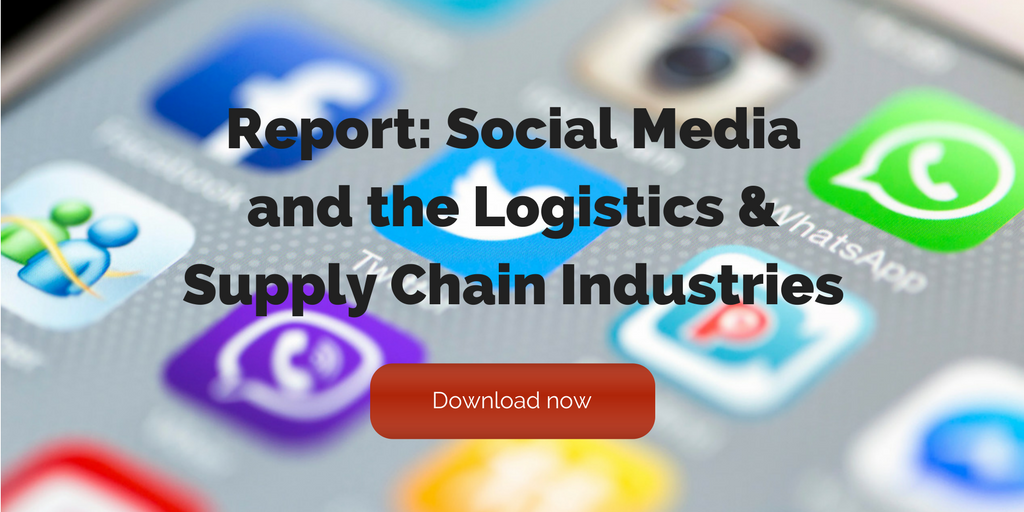

by Fronetics | Apr 12, 2018 | Blog, Content Marketing, Leadership, Marketing, Social Media, Supply Chain
Make the most of your supply chain leaders’ social media accounts by following these steps.
I’ve written many times before about the importance of supply chain leaders being on social media as the face of their brands. Social media presents a huge opportunity for executives to use their relative industry celebrity to be an extension of their organizations.
So you are ready to commit to a more active social media presence (or you’re going to be ghost-posting for your executive). Where do you begin?
We’ve come up with 4 tips for supply chain leaders to making the most of their presence on social media.
4 tips for supply chain leaders on social media
1) Find the right platform (or platforms) for you.
The first thing to consider is your target audience. If you’re looking to reach a young demographic, for example, Snapchat is probably the way to go, as 45% of its users are under the age of 24. Likewise, if your brand would be well-served by live video (hint: it probably will!), Facebook Live and Instagram Stories offer great possibilities.
Next, think about your personal voice, and what type of content you are likely to be posting. Thought leadership can often best be established on LinkedIn. But that doesn’t mean that Facebook, Twitter, and YouTube aren’t also good avenues to present your voice to the world. Pick the platforms that you feel speak most to your audience and best serve your brand.
2) Use your creative side.
Supply chain and logistics leadership requires a tremendous amount of creativity and innovation. Let these qualities shine through in your social media presence! You have the tools to spark more engagement, increase follower count, and make your posts go viral.
This means using your unique voice to be a storyteller, engage your audience, and create a face for your brand. If you need some inspiration, check out these 7 Twitter accounts.
3) Create space for conversation.
Too many would-be social media mavens fall into the trap of posting the kind of content that doesn’t invite interaction. Instead, be a conversation-starter.
First, take a look at your audience and what kind of interactions they have online. You can scan the pages of other leaders in your niche as a reference point.
You can generate interaction and engagement by showing gratitude, listening to your audience, handling queries, posting thought-provoking content, and posing questions in your posts.
4) Avoid controversy.
This might seem obvious, but there’s a fine line to walk between posting or re-posting thought-provoking content and becoming an inadvertently controversial figure.
Keep in mind that, in the public platforms that are social media, all your moves will be under constant scrutiny from your fans, followers, and people in their networks. This means that while cultivating a personal voice, it’s important to maintain a level of professionalism. And stay away from posting anything that can make you a lightning rod for controversy!
Where do you go to follow supply chain leaders on social media?
Related posts:


by Fronetics | Mar 13, 2018 | Blog, Content Marketing, Leadership, Logistics, Marketing, Supply Chain
Here are five books for supply chain leaders to stay on top of industry trends and management practices.
“Leadership is the capacity to translate vision into reality.” — Warren Bennis
All executives and managers bring different skills to the table. They have different experiences and approaches that set them apart. So what makes an executive a great leader? Great leaders embody the ability to inspire and empower their teams to succeed.
But great leaders don’t stay great, unless they continue to adapt to new environments, approaches and, ultimately, challenges. One of the best ways to sharpen your leadership skills is by learning from other leaders’ experiences. Leadership books, especially those focused on the supply chain and logistics industries, give valuable insight into the trials and triumphs of your industry peers’ encounters.
Here are five books that we recommend reading to keep getting the job done: empowering your team, learning about industry trends, updating your management practices, and other key insights.
5 must-read books for supply chain leaders
1. The Supply Chain Revolution: Innovative Sourcing and Logistics for a Fiercely Competitive World
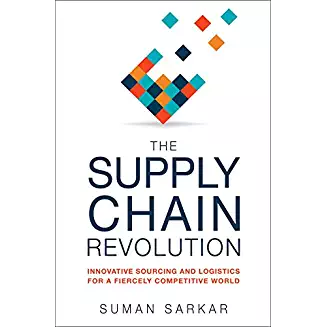
The smartest leaders see supply chain and sourcing for what they can be: hidden tools for outperforming the competition. Steve Jobs, upon returning to Apple in 1997, focused on transforming the supply chain. He hired Tim Cook, and the company sped up the development of new products, getting them into consumers’ hands faster. The rest is history.
Across a range of industries, once-leading companies are in trouble. While competitors were shuttering stores, Zara’s highly responsive supply chain made it the most valued company in the retail space and its founder, the richest man in Europe. The success of TJX, Amazon, Starbucks, and Airbus is fueled by supply chain and sourcing. Showcasing real solutions, The Supply Chain Revolution aims to educate leaders to improve customer satisfaction and increase revenue.
2. The Forklifts Have Nothing To Do! Lessons in Supply Chain Leadership
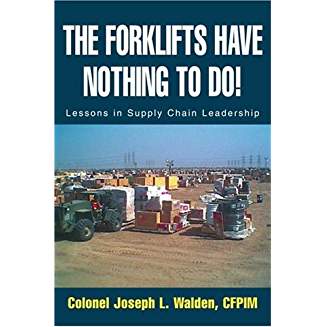
The Forklifts Have Nothing To Do! by Colonel Joe Walden provides practical methods for improving supply chain operations. Walden has spent more than 25 years leading supply chain operations and believes that improving your supply chain will improve your bottom line, regardless of your industry.
His recommendations draw on examples in civilian industry and military operations, including his recent experiences in Operation Iraqi Freedom. Supply chain operations in the military are very similar to supply chain operations in commercial industry. Both have the ability to improve operations for the customer.
3. Managing Supply Chain Operations
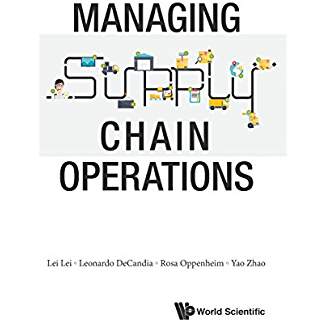
Managing Supply Chain Operations by Lei Lei, Leonardo DeCandia, Rosa Oppenheim, and Yao Zhao shows leaders the key drivers of supply chain performance. These include demand forecasting, sales and operations planning, inventory control, capacity analysis, transportation models, supply chain integration, and project management and risk analysis.
The book is enhanced by real-life examples and case studies, as well as strategies from best practices and a focus on social and economic impact. The content reaches beyond traditional operations management and draws on the extensive experience of the authors conducting industry projects through the Rutgers Center for Supply Chain Management. The input of senior business executives has been an invaluable asset in presenting a balanced knowledge of both quantitative models and qualitative insights.
4. Avoiding a Supply Chain Apocalypse: The Best of Dr. Tom’s Advice
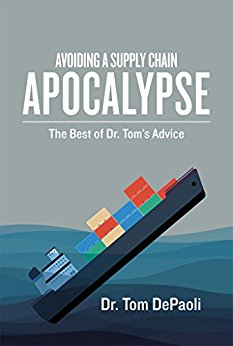
In his creative guide Avoiding a Supply Chain Apocalypse, Dr. Tom DePaoli offers practical strategies and tactics, learned and tested from his purchasing and supply chain career.
DePaoli recommends a multi-faceted, diverse approach to avoiding supply chain meltdowns. He challenges readers to survey his best writings and to select what fits their particular organizational cultures. There is no one-size-fits all in the supply chain. As the importance of supply chain management grows leaps and bounds, the supply chain professional must develop multiple options and proficient tactics to ensure the continuity of the supply chain.
5. Supply Chain Metrics that Matter

One cannot snap their fingers and deliver supply chain success. It happens over the course of many years and is measured in inches not miles.
In this book, Lora M. Cecere evaluates the progress of over a hundred companies over the period of 2006-2013. The effective supply chain makes a difference in winning a war, saving a patient, and driving commerce. But it also makes a difference in a community having clean air, potable water, and a higher standard of living. Mistakes are hard to overcome. Supply Chain Metrics that Matter tells this story. The book links corporate financials to supply chain maturity, and what metrics matter most.
What books for supply chain leaders do you recommend?
Related posts:


by Fronetics | Feb 4, 2016 | Blog, Leadership, Strategy, Supply Chain

When it comes to leading during difficult times in the supply chain, planning is critical. So is flexibility.
Winter storm Jonas is estimated to have cost $1 billion USD, although some believe the cost could go as high as $3 billion USD, as it paralyzed a large swath of the mid-Atlantic and Northeast. Some 30 inches of snow touched down on several East Coast cities, which cancelled over 12,000 flights and kept people out of work for days.
When difficult times strike, having a plan is critical. For example, with electricity still working, business doesn’t need to come to a close for days on end. Researchers who did a study at Chinese company C-trip encourage people to work from home during storms: “We encourage companies to do a trial the next time an opportunity presents itself — like bad weather, traffic congestion from major construction, or a disruptive event (such as a city hosting the Olympics or the World Cup) — to experiment for a week or two. We think working from home can be a positive experience, both for the company and its employees, as our research with C-trip showed. More firms ought to try it.”
The supply chain can be disrupted in many ways: natural disaster, terrorism, fluctuation in materials. When the problem hits, it’s good to have a plan, but one can’t always be prepared for every scenario. According to the president of global public affairs for UPS, Laura Lane, who had her share of difficult times when she was a young foreign officer in Rwanda during the genocide in 1994, “You have to make decisions that will result in the greatest good — and from that perspective, every decision becomes crystal clear.”
Lane shared her thoughts about how to handle difficult situations in the supply chain with The Wall Street Journal recently.
Look for leaders everywhere
Lane believes that it’s not only C-suite managers who can handle disaster. Being open to ideas and letting specialists rise from the ranks could be a game-changer in critical situations. “Don’t judge people based on their years of experience. Greatness can emerge from anyone on your team — people with decades of experience, or those just starting out.”
Don’t let fear stop you
When you are ultimately responsible for a huge decision involving lots of people and money, fear can infiltrate the mind and body quickly. Remember that you’re in the position you hold for a reason. Don’t let self-doubt or uncertainty about how things will play out delay your decision making. See boundaries and obstacles are new opportunities to find alternatives. Lane says, “Challenge how things are done, and rewrite the rules, if needed,” she says.
Think of the larger vision
Remember what the goals of the company are, and that people have been put in specific roles for reasons. Remember that your situation most likely involves teamwork, and that you can rely on the support, ideas, and voices of others, especially when the vision of the company becomes foggy in the stress of the moment. “Delivering on your promises and grounding your actions in your values is what is needed to be a great leader. You have to believe in the greater good of what you’re doing and then bring others along with you in realizing the bigger vision.”
You may also like:














